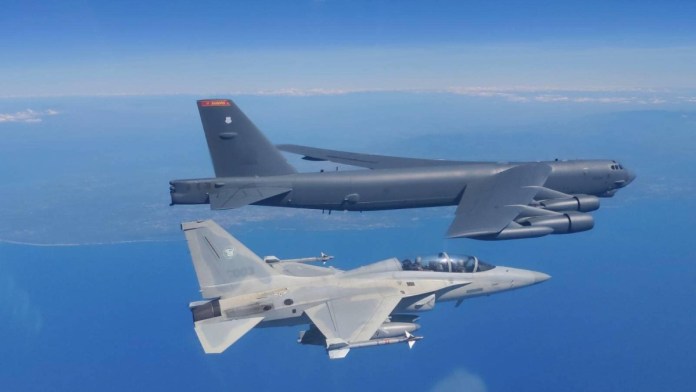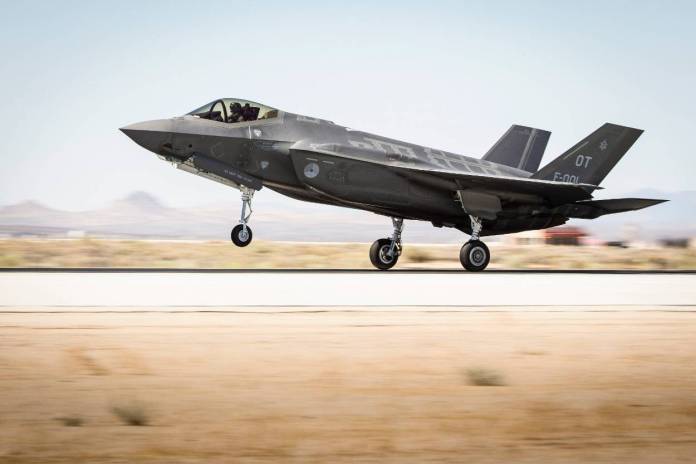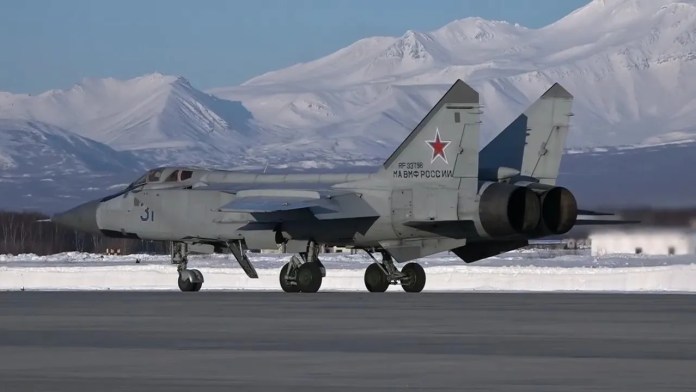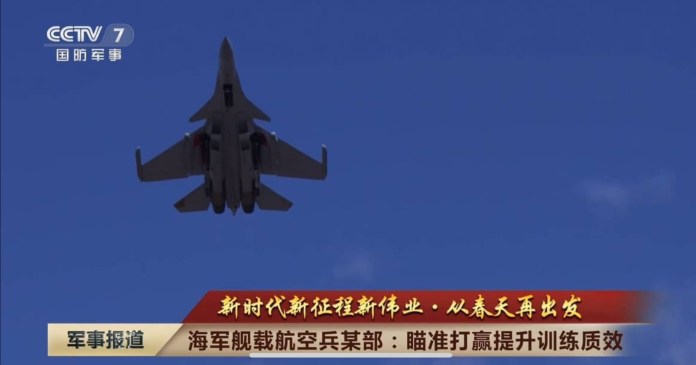The final days of 2011 saw the Obama administration finalize two important weapon sales with countries in the Middle East: a $3.48 billion sale of a Lockheed Martin-made missile defense system to the United Arab Emirates, and a $29.4 billion sale of Boeing-made F-15 fighter jets to Saudi Arabia.
While the announcements come as tensions between the United States and Iran continue to rise over a dispute regarding access to the Strait of Hormuz, the deals themselves are not meant to address current events, State Department officials said.
The F-15 deal was finalized with Saudi Arabia on Dec. 24. However, the White House first notified Congress of that sale, which includes 84 new aircraft and the modernization of 70 existing aircraft as well as missiles, spare parts, training, maintenance and logistics, in October 2010.
During a Dec. 30 State Department news conference, Andrew Shapiro, assistant secretary of state for political-military affairs, told reporters that the deal was not directed toward Iran, adding that work on the sale precedes the latest news out of the region.
"We did not gin up a package based on current events in the region," he said.
Over the last several weeks, the United States and Iran have stepped up the economic and military pressure on each other, with the latest threat coming from Iran, which warned the United States not to return one of its aircraft carriers to the gulf.
On Jan. 3, the Pentagon dismissed Iran's warnings.
"The deployment of U.S. military assets in the Persian Gulf region will continue as it has for decades," Pentagon Press Secretary George Little said in a statement. "Our transits of the Strait of Hormuz continue to be in compliance with international law, which guarantees our vessels the right of transit passage."
Meanwhile, Undersecretary of State for Political Affairs Wendy Sherman is on a four-day trip to Saudi Arabia and the UAE.
"While in the gulf region, she will consult with senior Saudi and Emirati officials on a wide range of bilateral and regional issues," according to the State Department. Her trip "further illustrates the robust strategic relationship the United States shares with both Saudi Arabia and the United Arab Emirates."
While the latest sales to the Middle East are being placed in this geopolitical context, the late December announcements are not tied to the escalating tensions, but part of a longer-term security plan, said Danny Sebright, president of the U.S.-UAE Business Council and a counselor at the Cohen Group, Washington.
"The overall sales with regard to both countries are definitely the result of a long-term concern with Iranian intentions, a long-term concern with wanting to improve individual countries' defense capabilities," Sebright said. "But, is the announcement of these two deals specifically tied to Iran? I would say no to that. I would say it's much more about internal decision-making in both countries - some with regard to terms and conditions of the sale, some with regard to budgeting, and some with regard to the Arab Spring."
According to Sebright, the United States gave the formal Letter of Offer and Acceptance to Saudi Arabia last spring and the Saudi government has been holding on to it until it was ready to sign.
"The basic deal had all but been done over a year ago, but they waited for internal and external reasons," he said.
A State Department official said, "While we decline to get into the specifics on the negotiations, the timeline here is not particularly atypical. A sale of this magnitude and complexity required close, continual consultations with our Saudi and industry partners to sort out the details."
Congress was first notified of the plan to sell UAE the Terminal High Altitude Area Defense System (THAAD) in September 2008. After negotiating the details of the contract, the United States and UAE signed the THAAD deal on Dec. 25. Lockheed Martin is on contract for four THAAD batteries for the U.S. Army, but the UAE deal is the program's first foreign sale.
Lockheed Martin's portion of the $3.48 billion sale is $1.96 billion. The overall deal includes two THAAD batteries, 96 missiles, two AN/TPY-2 radars, and 30 years of spare parts, support, and training to the UAE, according to the Pentagon.
Since the 2008 congressional notification, UAE trimmed the buy.
At first it was expected the country would buy three THAAD fire units, 147 missiles, and four radar sets for an estimated value of $6.95 billion.
The United Arab Emirates has asked Lockheed not to publicly discuss the delivery schedule of the weapon system, said Dennis Cavin, vice president of corporate business development at Lockheed Martin.
"This sale is an important step in improving the region's security through a regional missile defense architecture, and follows a number of recent ballistic missile defense-related sales," Little said in a Dec. 30 statement.
Sales from earlier in the year include a $1.7 billion direct commercial sales contract to upgrade Saudi Arabia's Patriot missiles and the sale of 209 Patriot GEM-T missiles to Kuwait, valued at about $900 million.
Loren Thompson, a defense analyst at the Lexington Institute, also put the sale in the context of December's announcement that Iraq would buy Lockheed's F-16s and Oman's decision to double the size of its F-16 fleet.
"When combined with the modernization of the Saudi Air Force and the extensive F-16 inventory of the United Arab Emirates, it is clear Arab gulf states will be positioned to greatly outmatch the antiquated tactical aircraft fleet of Iran," he wrote in a blog for Forbes.
According to Lockheed Martin, demand for missile defense capabilities continues to climb around the world.
"With regional threats in the Middle East and the uncertainties of what's going on in North Korea, demand for a very capable missile defense system has never been stronger," Cavin said. "The U.S. government is in discussion with a number of countries who have expressed interest in the THAAD, but we'd prefer that the Missile Defense Agency address any specifics with regard to which countries have contacted them."
The Missile Defense Agency declined to provide further details.
In announcing the Saudi deal, the State Department emphasized it would improve interoperability between the Saudi and American air forces.
In addition to greater cooperation with the United States, the sales also bolster internal cooperation among the Gulf Cooperation Council countries, which include Bahrain, Kuwait, Oman, Qatar, Saudi Arabia and the UAE, Sebright said.
The gulf countries have taken more steps to improve internal coordination and work toward multilateral defense policies in the last year than they have over the last 25, he said.


:quality(70)/cloudfront-us-east-1.images.arcpublishing.com/archetype/C3KZ2VHMQJH3BABQPT6XUUT2XM.jpg)


